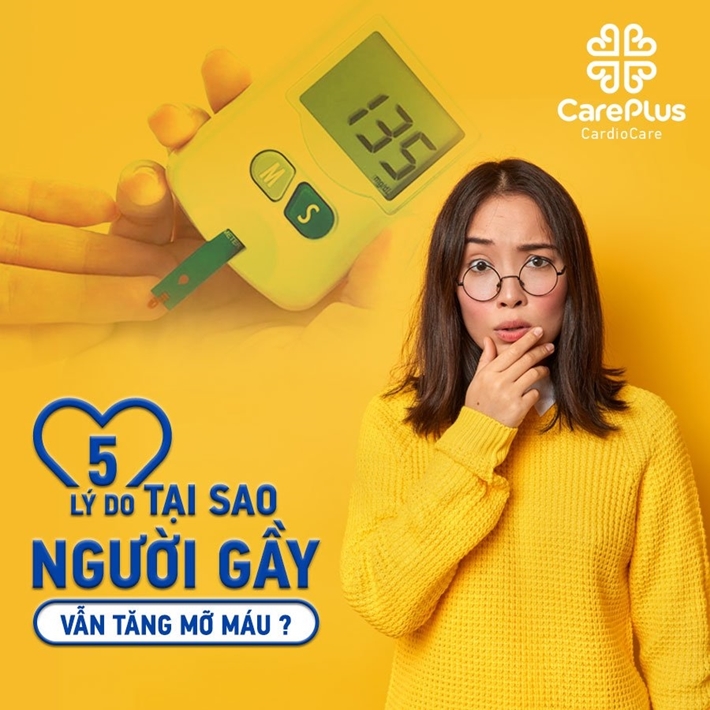What causes high cholesterol in thin people?
Many patients are surprised when their doctors inform them that they have high cholesterol because they are very young, their bodies look very thin, they do not feel fat at all like the pictures of people with high blood fat on television.

8/2/2021 11:16:49 PM
About 25% of people with a normal BMI have cardiovascular problems such as high blood pressure, dyslipidemia, and hyperglycemia.
Here are five essential points to identify these patients:
1. BMI is not as important as the location of fat storage
- New visceral fat is closely associated with cardiovascular disease. A waist circumference >94cm in men and >80cm in women is a simple way to detect this problem.
2. Muscle/fat mass is more important than the total mass
- These people often have instead "flabby" muscles; examine the biceps ("rat"), the calves are often very little muscle. The waist area is full of fat, and the abdominal muscles are loose. Most are office workers or sedentary women.
3. Unhealthy Diet
Being thin doesn't mean eating healthy. Don't eat fatty meat, but eat a lot of beef, offal, canned food, eat vegetables but have to fry with fat, but rarely eat boiled vegetables. Or those of you who lose weight with carbohydrates such as fasting for breakfast only eat sweet potatoes but drink milk, tea and soft drinks. Due to their nutrient absorption characteristics, these people will absorb more fat and sugar, store fat around the viscera and build less muscle.
4. Sedentary and get tired quickly when physically active
- As a result of the preceding. Due to the lack of muscle and lack of exercise, the physical ability is relatively poor. The body cannot burn stored fat and continues to increase blood fat.
5. Family factor
- People with immediate relatives such as parents, siblings have increased blood fat, especially cases of hyperlipidemia appearing from a very young age.
If you have one of these factors, actively making healthy lifestyle changes, regular health check-ups are the factors that help you avoid this "hidden" harm!